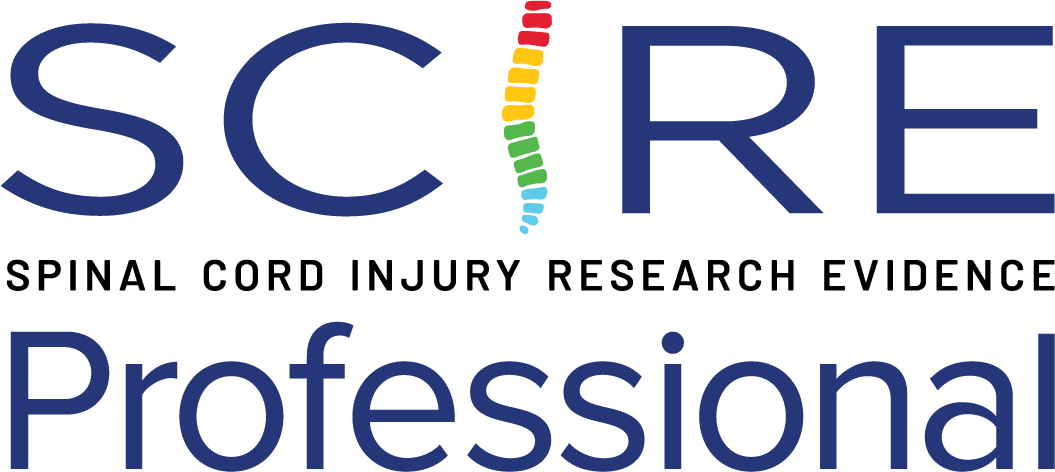- Self-report questionnaire that assesses an individual’s satisfaction with performance in life activities
- Assesses mobility, self-care, daily activity, recreational activity, and family roles
- Developed based on interviews with clinicians, patients and their significant others
Clinical Considerations
Although the RNL is commonly used as part of the national reporting system for individuals with SCI, there has been very little research conducted on the psychometric properties for this patient population.
ICF Domain
Participation
Administration
- Self-report or interviewer
- Contains 11 items
- There are 3 alternate scoring systems: a 10-point visual analogue scale, a 3-point scale, and a 4-point scale. We focus on the first scoring system here since it is most commonly used. Each item is scored using a 10 cm visual analogue scale anchored with phrases (0 = no reintegration and 10 = complete reintegration).
- Wheelchairs or other assistive/adaptive aids may be used when considering how to answer the questions.
- Administration time is approximately 10 minutes.
Number of Items
11
Equipment
None
Scoring
- Both the total score = sum (points all 11 items) and the adjusted score = (total score)/110 * 100 can be calculated.
- A minimum adjusted score is 0 and a maximum adjusted score is 100.
Languages
English, French, and Igbo
Training Required
Does not require advanced training
Availability
The Reintegration to Normal Living Index worksheet can be found here.
# of studies reporting psychometric properties: 3
Interpretability
- No cut-points have been established for the SCI population.
- Typical values: Mean (SD) Scores = 17.2 (4.4)
(Using 3-point scale, ranges 0-2; Hitzig et al. 2012; n=618; 501 males, 117 females; 203 incomplete tetraplegia, 102 complete tetraplegia, 156 incomplete paraplegia, 157 complete paraplegia; community living, mean (range) time since injury = 16.3 (1-60) years)
MCID: not established in SCI population
SEM: not established in SCI population
MDC: not established in SCI population
Reliability – High
- Internal consistency of the RNL Index is High (Cronbach’s a=0.84 to 0.97)
- Total item correlations ranged from 0.37-0.67
(Hitzig et al. 2012; n=618; 501 males, 117 females; 203 incomplete tetraplegia, 102 complete tetraplegia, 156 incomplete paraplegia, 157 complete paraplegia; community living, mean (range) time since injury = 16.3 (1-60) years)
(Mothaben et al. 2012; n=160, 134 males, 46 females; community dwelling people with SCI, discharged from inpatient rehabilitation for at least 2 years)
Validity – Low to High
Correlation of the RNL Index is:
- High with the Quality of Life Index (Pearson’s r=-0.654)
- Moderate with the Functional Independence Measure (Pearson’s r=-0.348)
- Moderate with the Rosenberg Self-Esteem Scale (Pearson’s r=-0.483)
- Low with the American Spinal Injury Association (ASIA) – motor score (Pearson’s r=-0.196)
(May & Warren 2002; n=98; 76 males, 22 females; 56% cervical injury; mean (range) time since injury = 15.5 (1-78) years)
Responsiveness
No values have been reported for the responsiveness of the RNL Index for the SCI population at this time.
Floor/Ceiling Effect
No values were reported for the presence of floor/ceiling effects in the RNL for the SCI population.
Reviewers
Dr. Ben Mortenson, Dr. Carlos L. Cano-Herrera, Frances Fan
Date Last Updated
31 December 2024
Gray DB, Hollingsworth HH, Stark SL, Morgan KA. Participation Survey/Mobility: psychometric properties of a measure of participation for people with mobility impairments and limitations. Arch Phys Med Rehabil 2006;87: 189-97.
http://www.ncbi.nlm.nih.gov/pubmed/16442971
Hitzig SL, Romero Escobar EM, Noreau L, Craven BC. Validation of the Reintegration to Normal Living Index for community-dwelling persons with chronic spinal cord injury. Arch Phys Med Rehabil 2012;93:108-14.
http://www.ncbi.nlm.nih.gov/pubmed/22200389
May LA, Warren S. Measuring quality of life of persons with spinal cord injury: external and structural validity. Spinal Cord 2002;40:341-350.
http://www.ncbi.nlm.nih.gov/pubmed/12080462
Mothabeng DJ, Eksteen CA, Westaway M. Psychometric validation of the reintegration to normal living index in people living with spinal cord injuries. South African Journal of Physiotherapy. 2012; 68(2)
https://sajp.co.za/index.php/sajp/article/view/13
